TechRadar Verdict
The Fanatec ClubSport v2.5 is not a racing wheel to buy on a whim, but it is superb. It’s built like a tank but runs quiet as a Tesla, and provides even more immersive force feedback than Fanatec’s excellent CSL Elite wheel base.
Pros
- +
Powerful and refined force feedback
- +
Superb pedals on offer
- +
Tough build
- +
Part of an excellent modular system
Cons
- -
Gets pricey when you add all the peripherals
- -
No PS4/PS5 support
Why you can trust TechRadar
The Fanatec ClubSport v2.5 racing wheel is bought as a standalone wheelbase or in a bundle, however, to review this wheel we also used the following peripherals which are not provided with the purchase of the standalone wheel:
ClubSport Wheel Rim R330
ClubSport Steering Wheel Universal Hub for Xbox One
ClubSport Pedals V3
ClubSport Table Clamp V2
Two-minute review
The Fanatec ClubSport v2.5 is the best racing wheel setup you can get before you head into the wild world of direct drive wheels. You had better check your bank balance before doing that.
It overtakes the Thrustmaster T-GT with ease. You get excellent force feedback power, smoothness and quiet operation, making you wonder if there’s any reason to spend more.
Sure, if you have a room in your house dedicated to a sim racing, with a bucket seat and frame at its centre, consider the Fanatec Podium instead. But today we’re looking at whether this is a good buy for the average fan of realistic racing games.
The immersion on offer here is fantastic. Fanatec’s powerful ClubSport v2.5 dual belt force feedback system transmits the feel of the road and the pull of a two-ton performance car struggling against your turns with an assured force you don’t get with great entry-level wheels like the Logitech G920 and Thrustmaster T150.
We’ve tried the Fanatec ClubSport V2.5 with several top games, primarily Assetto Corsa and Forza Motorsport 7. The depth of its feedback is what impresses most. There’s a tendency to focus on stats like newton meters of torque when talking about racing wheels, which don’t mean much out of context.
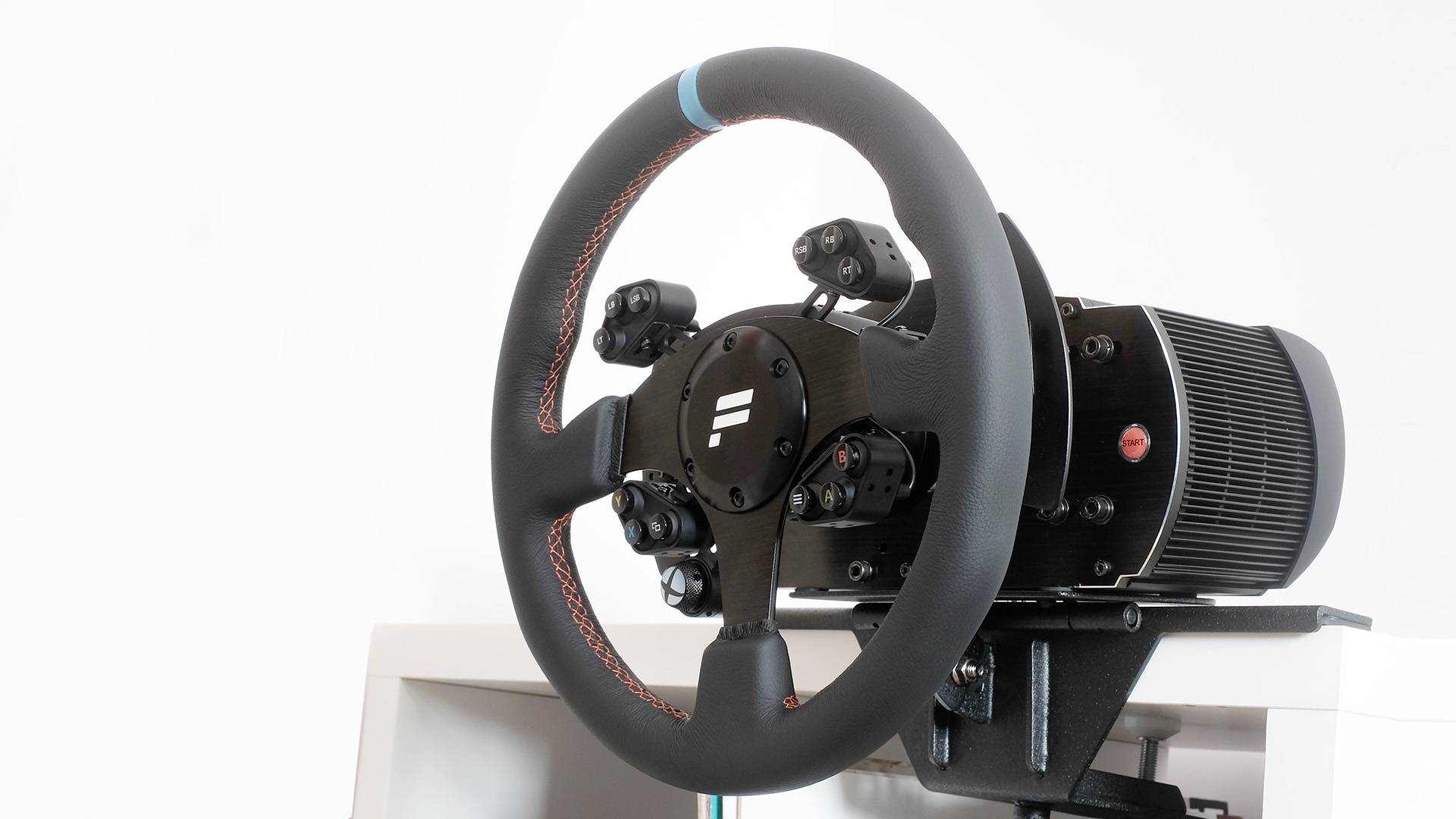
Behind the wheel of a virtual Mini Cooper, the Fanatec ClubSport v2.5’s high-torque force feedback system lets it convey road feel and car physics with a full-throated roar that borders on violence at times. And a Mini is hardly the most powerful car you’ll get behind the wheel of in one of these games.
In an A/B comparison with Fanatec’s lower-end CSL Elite, attached to a basic wheel rim, it is a little like switching from a great home hifi speaker system to one with two wall-shaking subwoofers.
The Fanatec ClubSport v2.5 won’t disturb the neighbors, though. It operates so quietly compared to most other racing wheels we’ve reviewed, we did wonder if the fan was faulty.
This is the wheel to get if you have money to spend, but are not ready to spend an (arguably) ridiculous amount on a direct drive wheel. However, it may not be the best buy if you're an on-off seasonal racer who wants a wheel that can easily be setup up and stashed away as your interest, and spare time, peaks and wanes.
The Fanatec CSL Elite and Thrustmaster T300/T300 RS wheels are a better fit for that crowd.
- Best racing wheel 2020: the best peripherals for racing games
Price and Availability
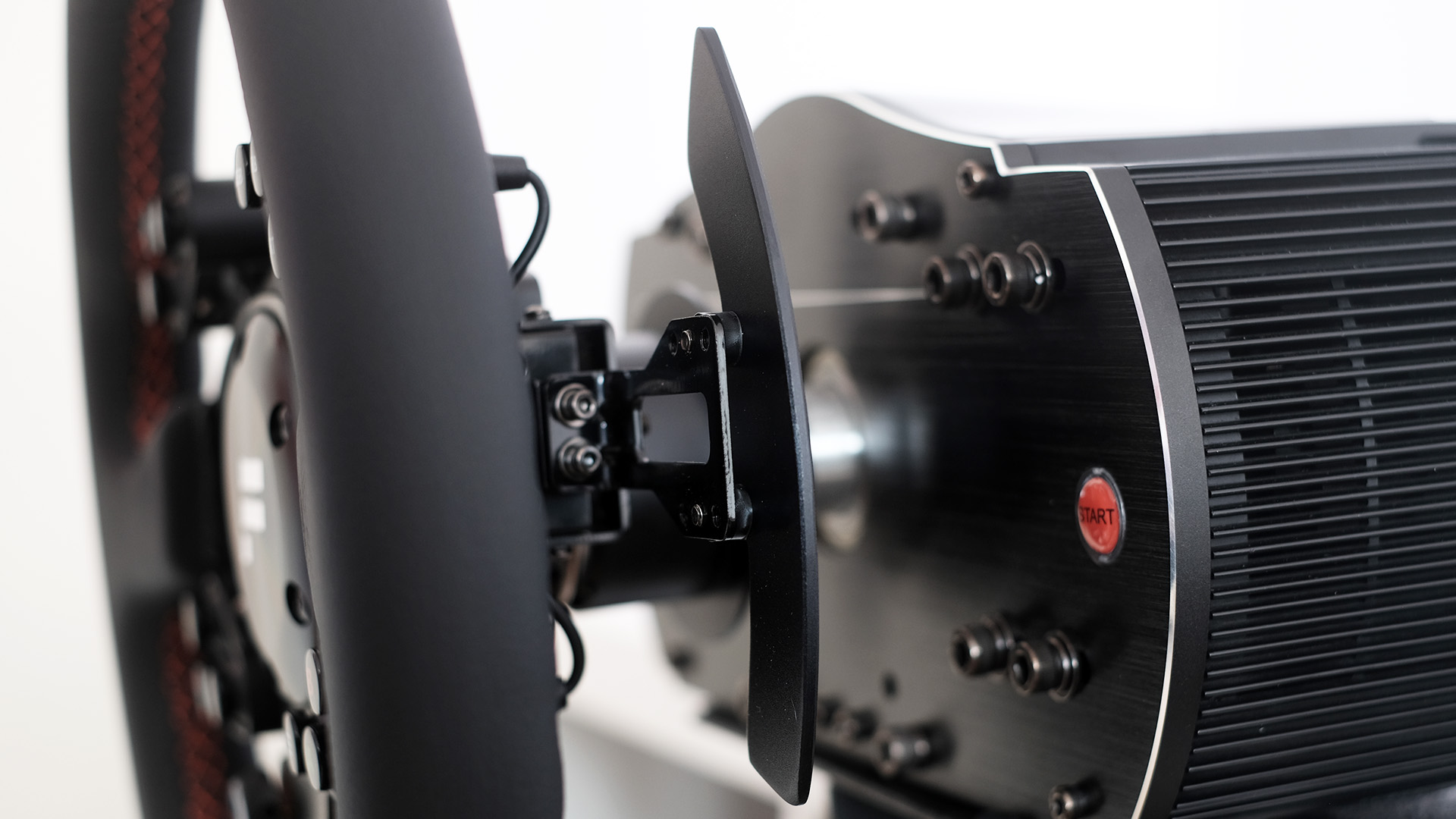
Fanatec offers a modular system with so many options it can start to feel like the character generation part of an RPG.
Our review setup consists of the ClubSport V2.5 wheelbase, ClubSport Pedals V3, Wheel Rim R330, Universal Hub for Xbox One and Fanatec’s Table Clamp V2.
This brings the total to 1718 Euro ($2024, £1560). Ouch.
However, we recommend starting with Fanatec’s bundles, which offer better value. The Forza Motorsport bundle includes the same basics, with a different rim, and a ClubSport gear shifter for 1499 Euro ($1767, £1362).
Those primarily interested in the ClubSport base should start with the 799 Euro ($942, £729) Competition pack. It includes a simpler two-pedal board with a less advanced brake, and a lighter wheel rim, but even Fanatec’s entry-level pedals compare well with those of Thrustmaster and Logitech.
Fanatec’s wheels are currently only available from its website.
Compatibility
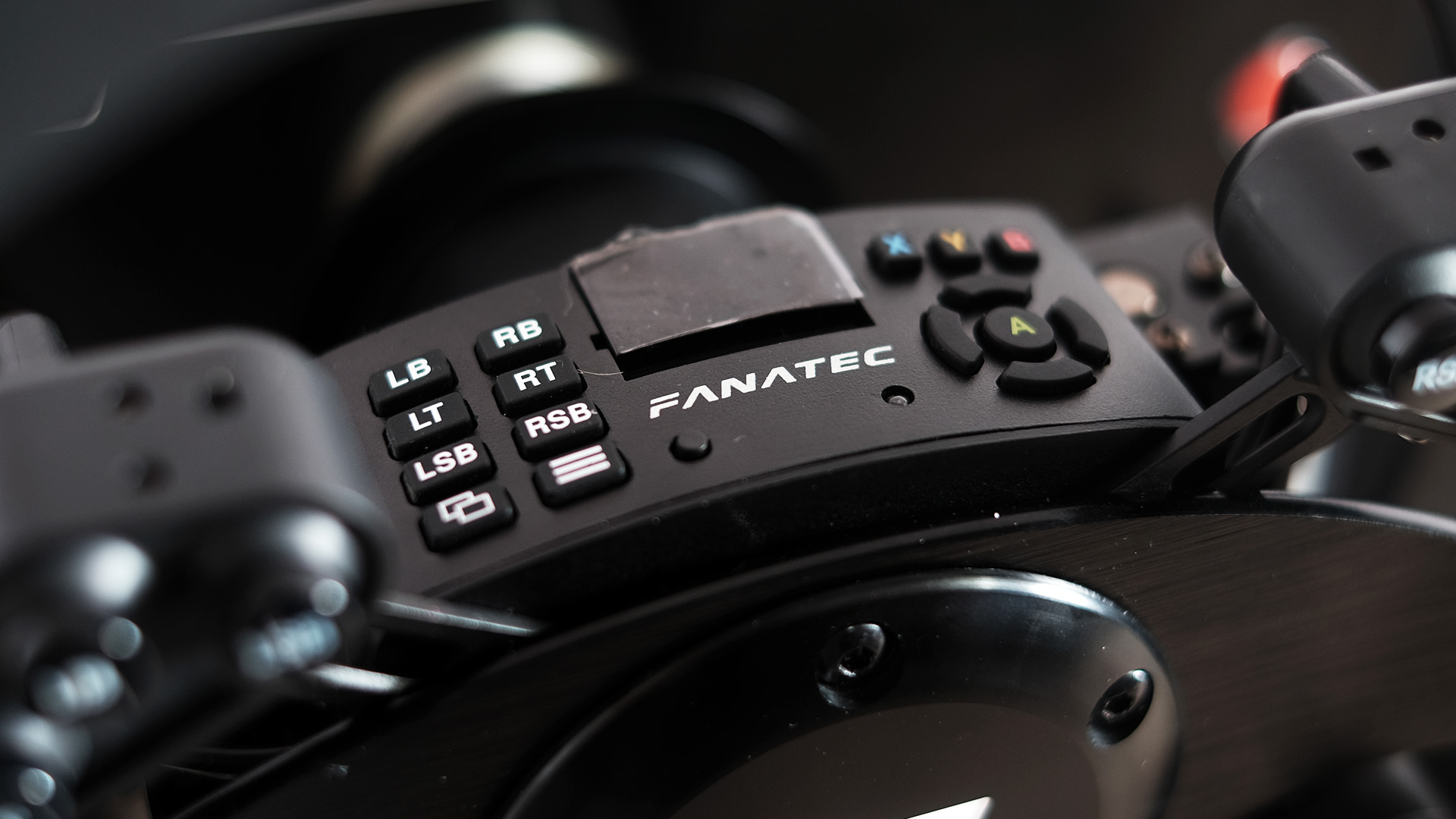
Ready for the first headache? The ClubSport v2.5 wheelbase will only work with Xbox consoles and PC.
Cross-platform console players will need to either downgrade to the CSL Elite +, which works across Xbox and PS4, or consider buying Collective Minds' Drivehub. This is an $89.99 third-party accessory that makes Xbox wheels work on PS4.
We tried using our Fanatec ClubSport v2.5 on PS4. It didn’t work.
The good news is a ClubSport wheel will work on Xbox Series X and Series S. Phew.
Design and build
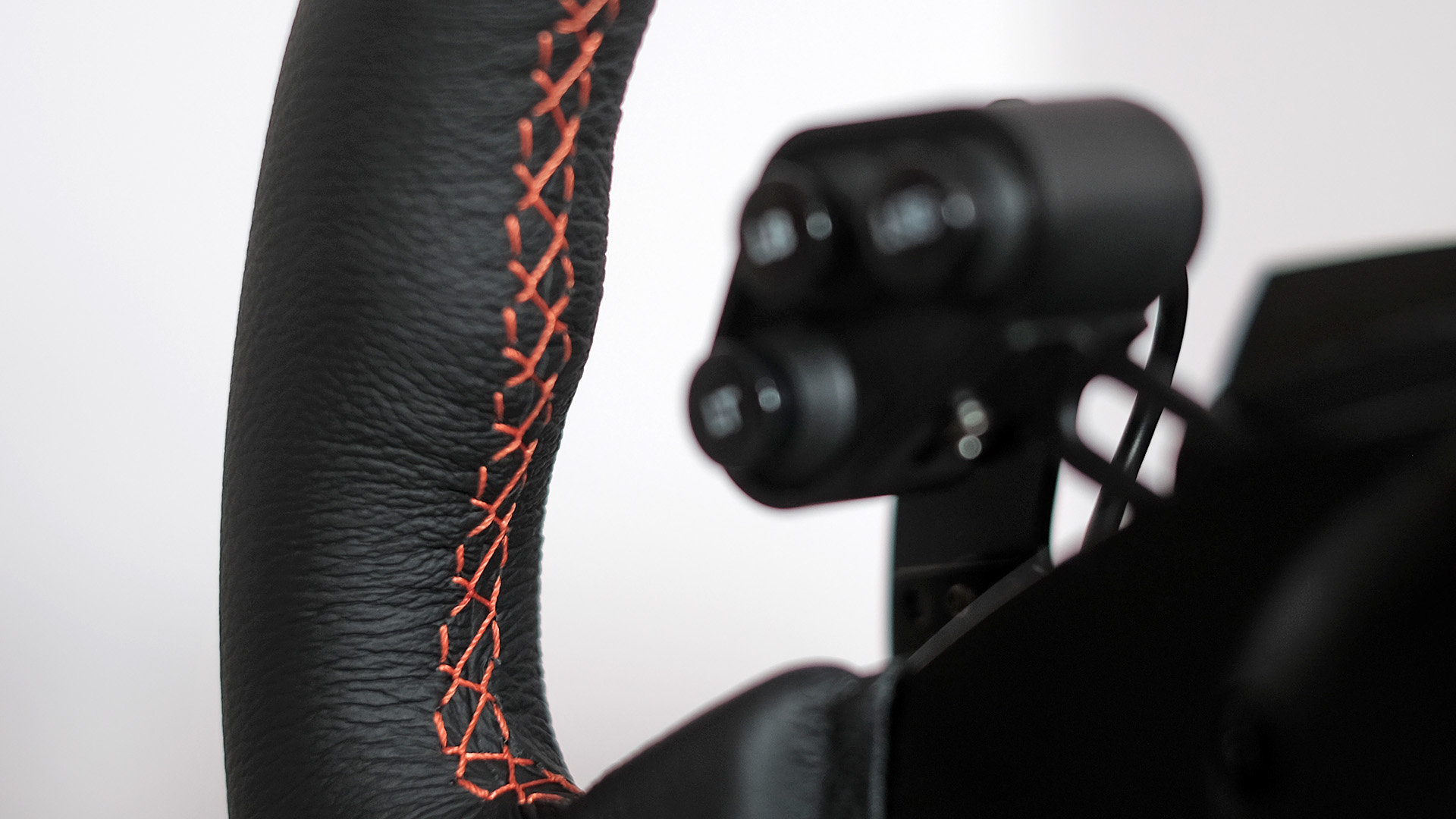
A chunk of the Fanatec ClubSport v2.5 budget goes into its build quality. Where the CSL Elite wheelbases have a largely plastic shell, all the most important parts here are aluminium.
Its front is a thick plate of the stuff, dotted with screws that can be used to mount static shifters. Much of the sides are metal too. There are large airflow grilles that team up with a fan on the back to keep the Fanatec ClubSport v2.5 cool.
Fanatec has considered heat most than most. This is the quietest-running force feedback wheel I have used to date. It’s quite normal for one of these wheels to start making noise similar to a console under strain after a few laps of a track, but this one stays fairly quiet even after a couple of hours at 100% force feedback strength.
The Fanatec ClubSport v2.5 also has a neat translucent window up top that lets you see, vaguely, into the workings of the steering column inside. Only the rear part is plastic. But it has a nice soft-touch finish. This wheelbase leaves a far greater impression of quality than the CSL Elite.
It’s surprisingly petite too. This is a heavy base, but not a deep one.
Force Feedback quality
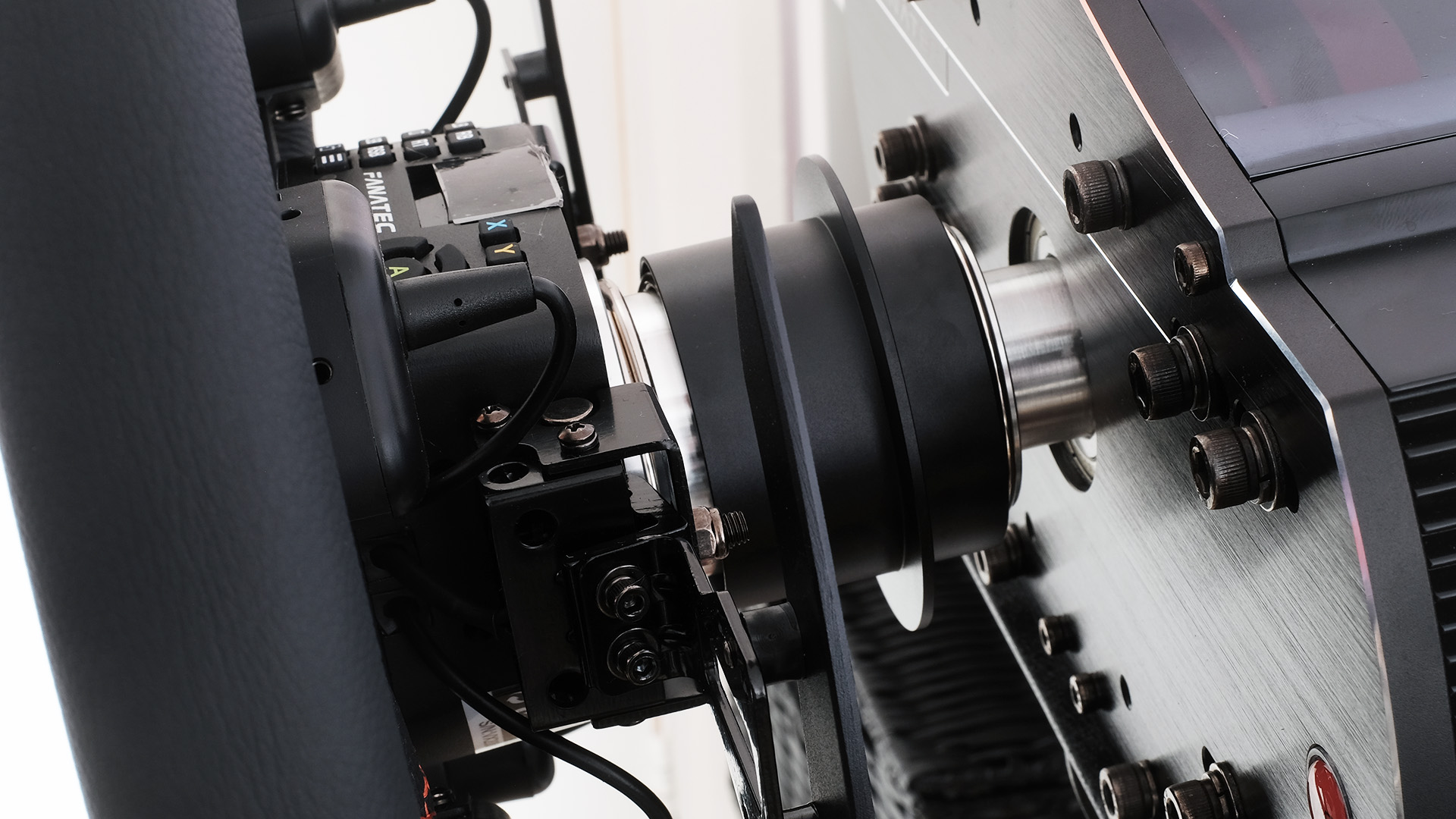
The Fanatec ClubSport v2.5 offers completely smooth turning. It’s smoother than any Logitech wheel, smoother than the Thrustmaster T-GT.
It uses two belts to drive its force feedback. And while the ClubSport v2.5 shares several internal components with the cheaper CSL Elite, Fanatec says it offers up to 8nM of torque, to the Elite's 6nM.
This held up when we tried the two wheelbases, one after the other. Our ClubSport v2.5 wheel’s feedback has impressive depth and density. The aim with any wheel like this is to trick your brain into thinking you are driving a car rather than playing a game. It does the job wonderfully.
It’s particularly true for the fluffier feedback elements, like rumble effects, road-feel vibration, and the jolts of tires mounting a track’s side. The ClubSport v2.5 dishes them out more convincingly than any other sub $1000 wheelbase. Effects that can seem kinda tacky through a cheaper wheel but draw you further into the experience here.
It is not so much the peak power of the Fanatec ClubSport v2.5 that leaves such a great impression, but its dynamic range. To use a sound-based analogy, the feedback is 'bassier' here.
This is not just down to the wheelbase, though. Our ClubSport v2.5 also has a reasonably hefty Fanatec R330 wheel rim (to be purchased separately or in a bundle), which acts as a dampener of sorts, so the most sudden of feedback jolts feel like thuds rather than clangs.
It’s particularly noticeable when comparing this setup to the CSL Elite with its most basic rim, the P1. Annoyingly, for those keen on getting the best experience for the least cash, the sturdiness of the actual wheel part matters too.
For the first few hours of using the Fanatec ClubSport v2.5 we did think there was a certain granularity to the motor’s feedback. However, after pruning back all the road effects, this seems to be more a case of the wheel attempting to apply the texture of road feel, and not quite doing the job perfectly. A force feedback motor can only do so much.
Still, after sinking into the simulation we still much preferred the Fanatec ClubSport v2.5 with all the immersive extras turned on.
Fanatec ClubSport v3 pedals
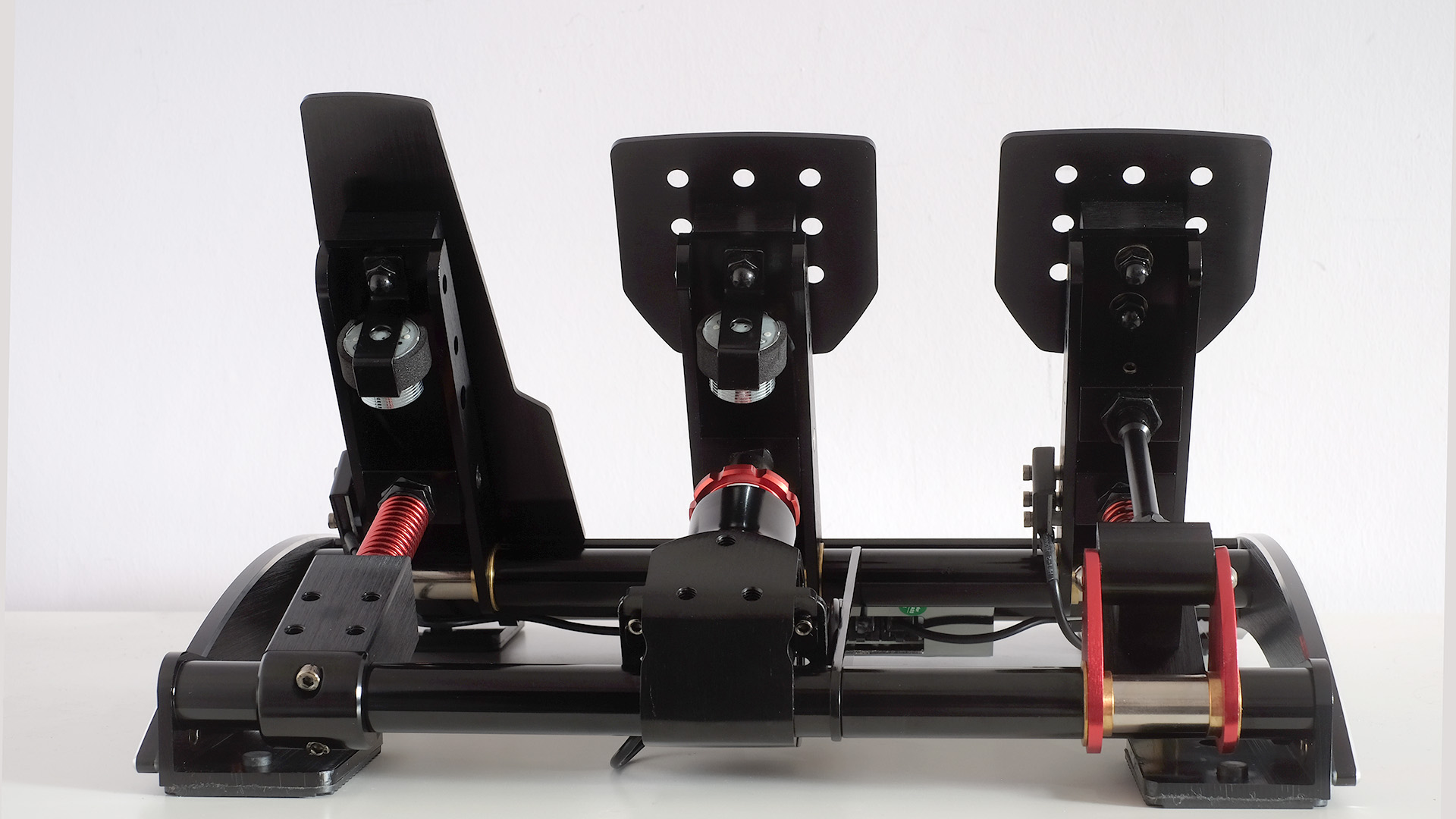
The ClubSport v3 pedals we used are the perfect pairing for the ClubSport v2.5 (to be purchased separately or in a bundle), but they work just as well with the CSL Elite (though are not .
This is a three-pedal board with a level of engineering that makes entry-level sets seem like toys. The clutch, accelerator and brake don’t just have different levels of resistance, but a completely different actuation profile.
The Fanatec ClubSport v3 clutch is highly springy. It doesn’t budge until you reach a certain level of pressure, then it reacts quickly. The accelerator is the most familiar-feeling among racing wheels, with standard linear resistance. And the brake, the star of the show.
This is a load cell brake, which means it senses the level of pressure applied, rather than the distance the pedal itself is depressed. The hydraulics allow for such a high level of required pressure you’d better have that pedalboard locked in place. But there are multiple levels of customization here.
You can choose how much pressure counts as a "full" depression of the brake pedal in the software, and a dial on the pedal mechanism reduces (and increases) the tension of the pedal itself. This is so much easier to tweak than Fanatec’s first load cell brake you can make tweaks for different players in seconds. We love it.
The color accents of the pedals’ mechanical bits are even pretty, not that you’ll pay all that much attention to them.
Wheel, controls and customization
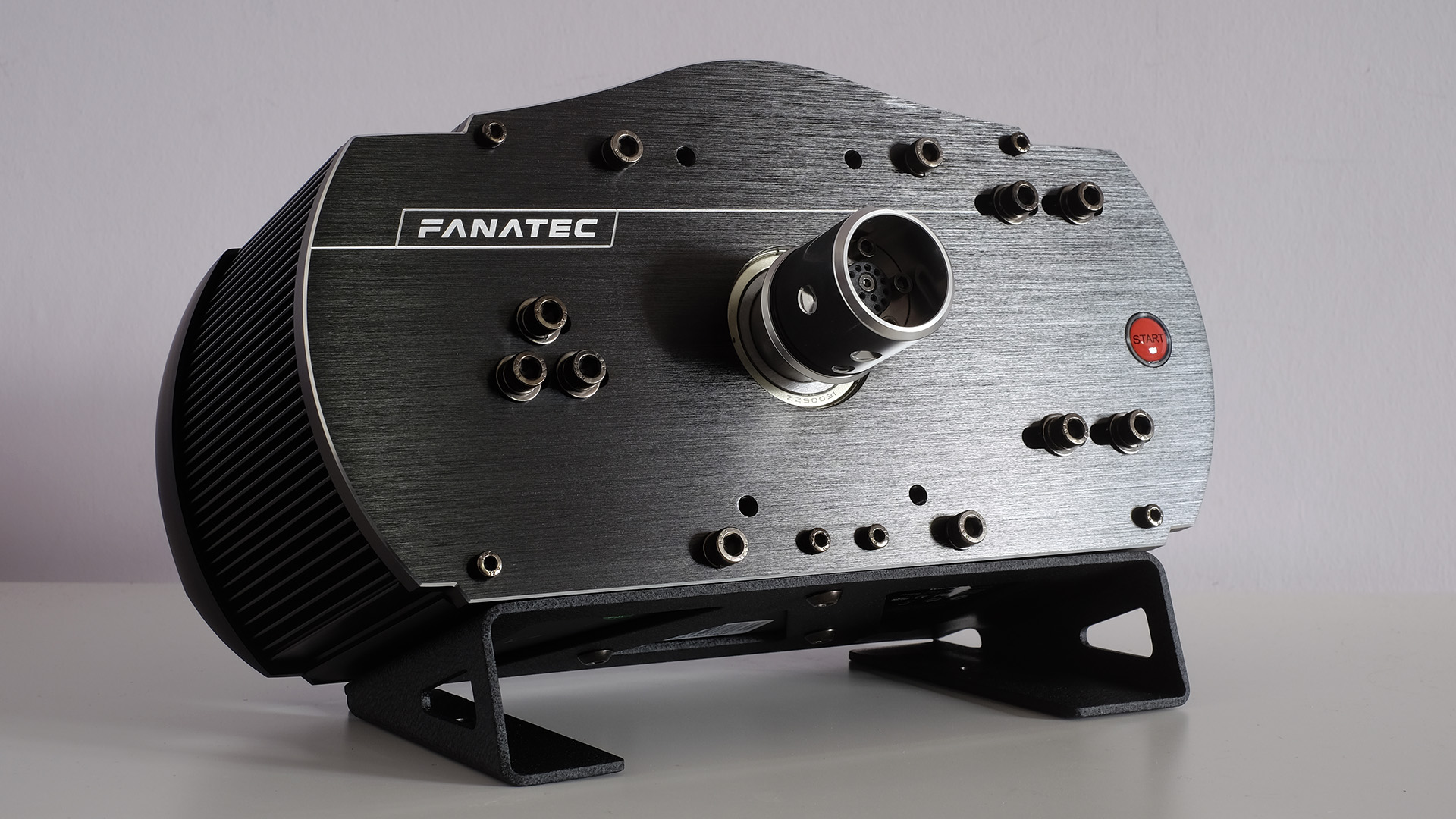
We used the ClubSport v2.5 with Fanatec’s Univeral Xbox Hub (to be purchased separately or in a bundle). This screws onto the wheel rim, and provides all the controls you’ll need.
It mirrors all the buttons on an Xbox One pad, most of them twice. There are buttons on the front and a panel of extra ones sits on the top of the control module.
Use the ClubSport v2.5 with an Xbox, rather than a PC, and there’s no need to keep a pad handy. Those tiny upper buttons are a little spongy, but the front ones have a reassuring click action.
The Universal Xbox Hub is also home to a little screen. This shows the gear you’re in, and the menu system when you dig a little deeper into the on-wheel feedback tweaking options.
This isn’t a wheel you should just plug in and use without consulting the manual. Sure, that works, but the fine-grain control on offer is worth exploring. You can alter the force feedback level, the severity of it (this is a bit like a violence control), the shock effects and a bunch of other factors.
There are five different on-wheel profiles, letting you tune the ClubSport v2.5 to suit different games. And that’s probably enough given the limited number of sim racers that really make a racing wheel shine.
Fanatec fans will notice there’s no rev counter LED array here. Having done a direct comparison with the CSL Elite for this review, our reaction: thank god. We played in a dark room using a projector and found the Elite's rev LEDs distracting, and far too bright.
Some of Fanatec’s wheel rims have built-in rev indicators, should you want one. Ours is the relatively plain RS330, a lovely construction of metal and stitched leather.
This is where you can give your set up a more specific feel and flavor. Fanatec makes wheels based on those of F1 cars, classic sports models, Porsches and BMWs. Some have a leather wrap, others use Alcantara.
And, much as the ever-complaining money-saver in us wants to deny it, the ClubSport v2.5 really benefits from a slightly heavier wheel rather than Fanatec’s base-level P1. It appears to grant the force feedback a certain satisfying weight.
The Universal Xbox Hub also holds the gear shifters. They have a highly springy action with a click at the end, for a combination of good resistance and definition. Again, it’s a more satisfying feel than you get with Fanatec’s P1 steering wheel. The wallet is groaning right now.
Setup
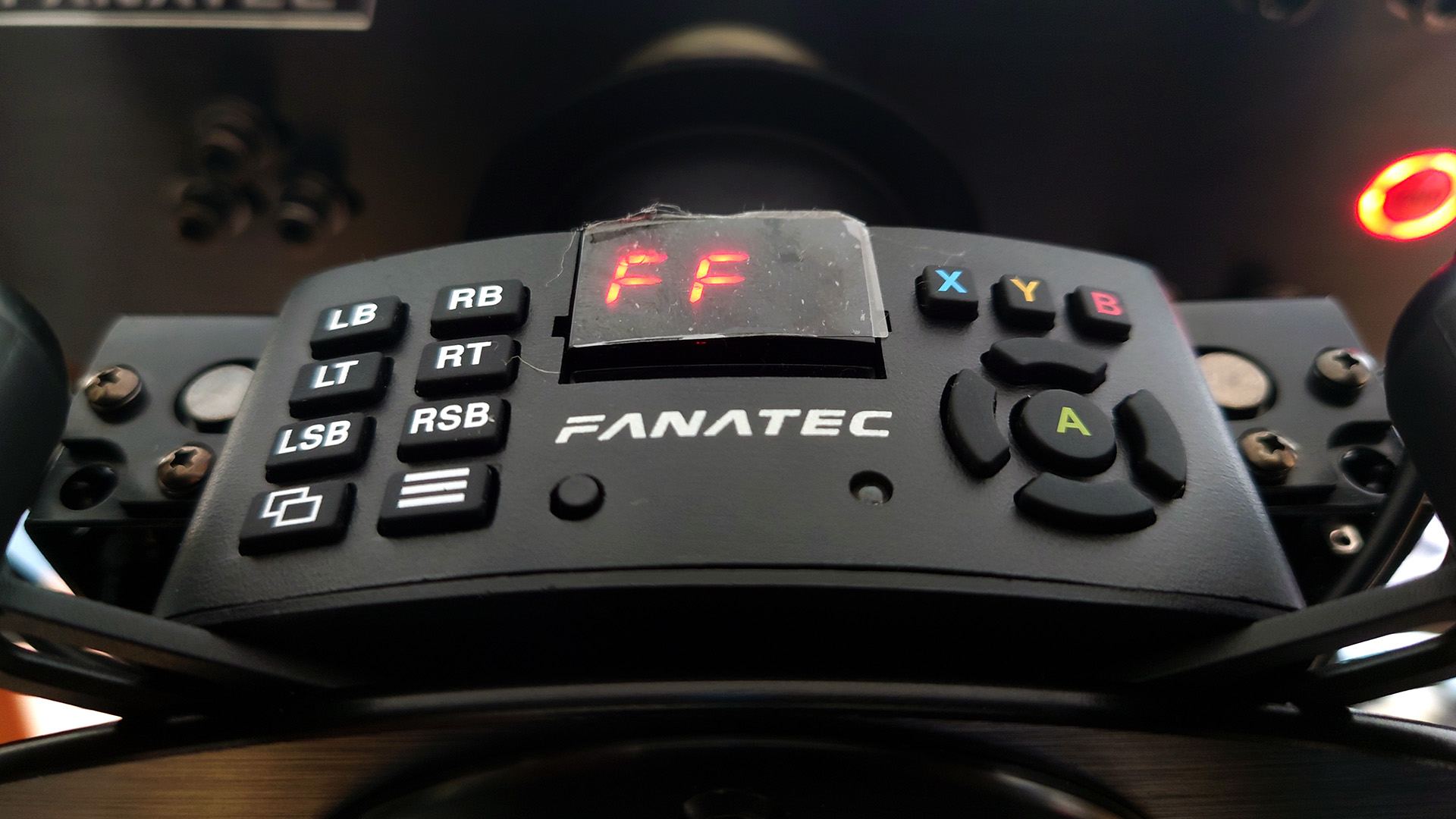
There are many ways to convince yourself it’s worth paying the cost of a second-hand car on the Fanatec ClubSport v2.5. Let’s deal with a few arguments to spend less.
The Fanatec ClubSport v2.5 does not come with a table clamp. If you want a casual setup to bring out for weekend sessions every now and then, this probably is not it.
Fanatec sells two table clamps. We tried the “v2” version, which costs 59.99 Euro ($70, £55). It’s an extreme, solid, all-metal clamp so heavy-duty it allows you to tilt the ClubSport v2.5 downwards by up to 20 degrees with no worries.
However, it is heavy at over 5kg and the clearance required by the mounting points underneath mean it won’t suit all wheel stands. If you use a 'portable' wheel stand rather than a permanent setup, the Fanatec CSL Elite seems a better fit. It, like the Thrustmaster and Logitech wheels, includes a screw-in plastic clamp that holds everything in place perfectly well.
ClubSport V2.5 vs CSL Elite
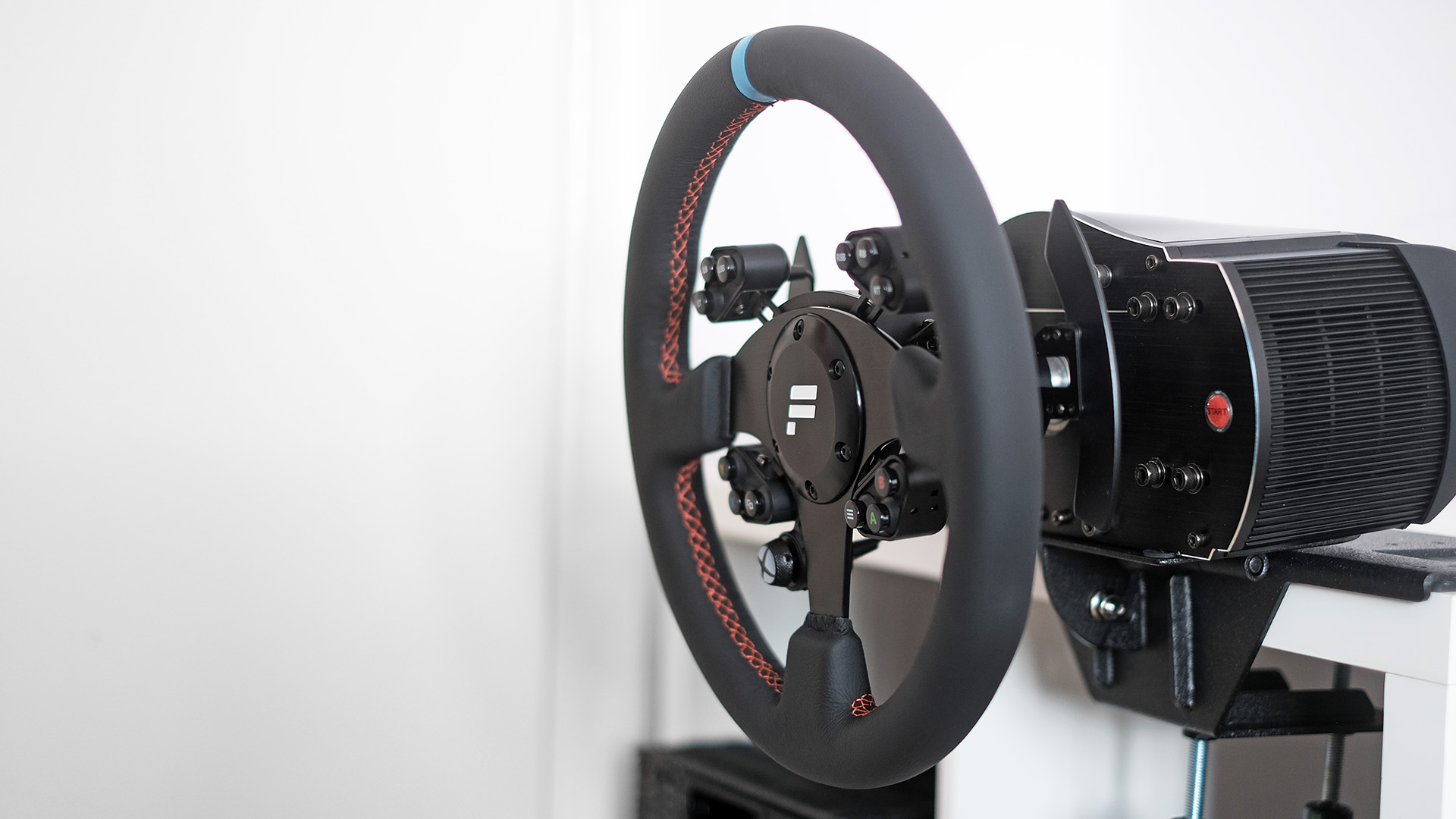
There are references to Fanatec’s lower-cost CSL Elite wheel throughout this review, but let’s consolidate the basics here. If you want to play on PS4 as well as Xbox and PC, you need a CSL Elite + wheel rather than a ClubSport v2.5.
The CSL Elite is a better bet if racing is only part of your gaming hobby. It is lighter, the bundled plastic clamp is easier to setup and the wheel feels more at home on a basic wheel stand than the ClubSport v2.5.
Its feedback is less impressive, particularly in the transmission of periphery effects rather than just the pull of the wheel against your turns. Some of this is down to the heavier wheel used, but the ClubSport v2.5 also has greater torque, a different belt drive system and two hall sensors instead of one optical one. It is not the case that Fanatec dropped the same components into a fancier shell.
The ClubSport v2.5 is also quieter, not just in terms of fan noise but the clangs and stabs of sudden force feedback can resonate through a metal mounting plate with a CSL Elite.
Fanatec’s CSL Elite PS4 Starter Kit (which also works on Xbox One) will still be our go-to recommendation for those who want to try out racing wheels by starting with a low-compromise model. But for the real enthusiast, it’s the Fanatec ClubSport v2.5 every time.
Buy it if...
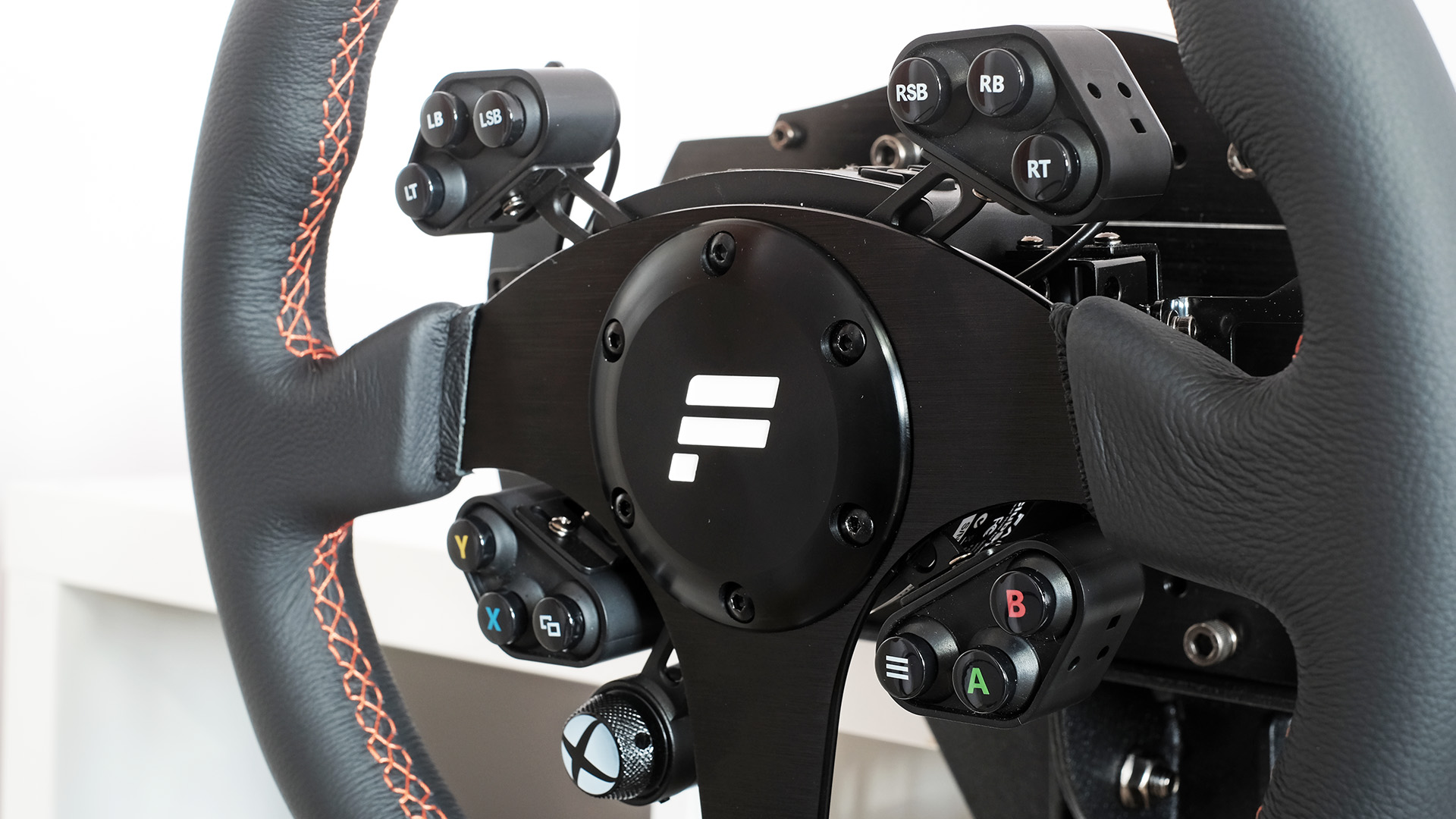
You want the best force feedback available in a belt drive wheel
The Fanatec ClubSport V2.5 offers the best force feedback wheel experience you can get without spending $1500 or more on the wheelbase alone. For that sort of money you can get a direct drive wheel, where there are no belts between the wheel rim and the motor inside. But, for most of us, that kind of spend is just out of the question.
You have a dedicated wheel area in your house
The Fanatec ClubSport v.2.5 is really made for people who have a dedicated chair and frame just for racing. It doesn’t come with a universal clamp. The idea is you’ll screw it into a dedicated holder. This is the dream setup, but it required dedication, and potentially some grovelling to the people with whom you live.
You like the idea of a modular system
Fanatec offers the best modular system of any racing wheel manufacturer. There’s an amazing array of wheel rims, multiple pedal sets, a separate gearbox and a handbrake. It’s sim racing perfection. And it also means you can start with the most basic ClubSport v2.5 bundle and make your way up from there. Fanatec gear also holds its value much better than most tech, should you want to sell the has-beens on.
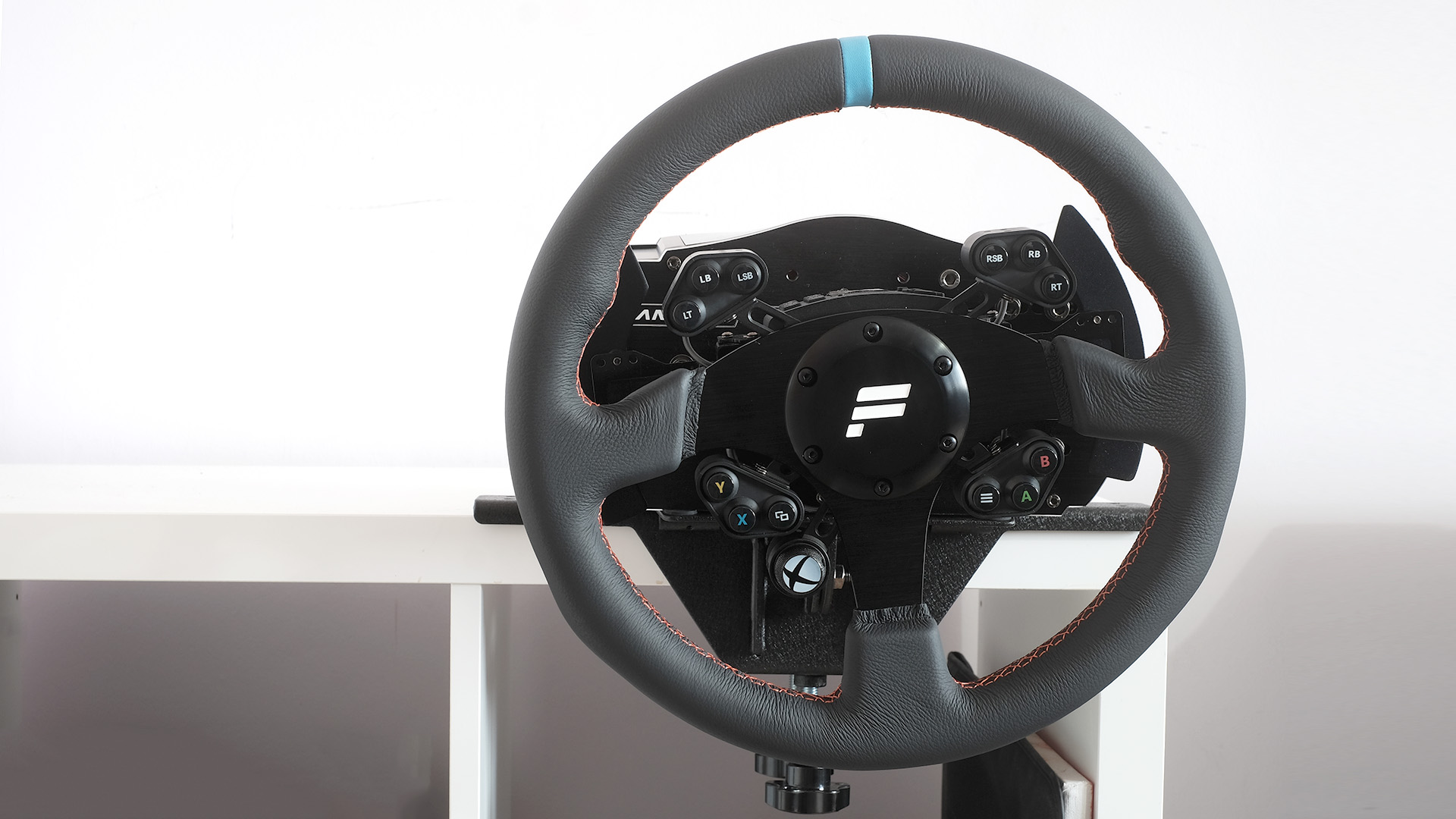
Don't buy it if...
You are a PlayStation gamer
Fanatec’s ClubSport v2.5 works with Xbox One and PC, and will work with Series X and Series S consoles. It offers no support for PS4 or PS5, so Gran Turismo 7 is off the cards. There is a third-party way to make the wheel work on PlayStations, Collective Minds’ Drivehub, but we have not tested it.
You are a casual racer
Let’s be straight with you. A ClubSport v2.5 may be a leap too far if you like Forza Horizon 4 and think sim racing might be your next passion. It just costs too much, unless you have money to burn. Start with either a Thrustmaster TX/T300 RS, a Logitech G29/920 or Fanatec’s CSL Elite. They get you at least 80% of what’s on offer here.
You want to use an easy-to-stash wheel stand
The Fanatec ClubSport v2.5 isn’t made for occasional sessions in a space that will only become a cockpit once a month. It doesn’t come with a table stand, and while Fanatec sells an excellent one it’s so heavy it can fell like it’s about to snap a basic wheel stand or a flimsy table. Again, think about one of the lower-cost options instead.
- Best racing games: the top racing titles that'll rev your engine
Andrew is a freelance journalist and has been writing and editing for some of the UK's top tech and lifestyle publications including TrustedReviews, Stuff, T3, TechRadar, Lifehacker and others.
